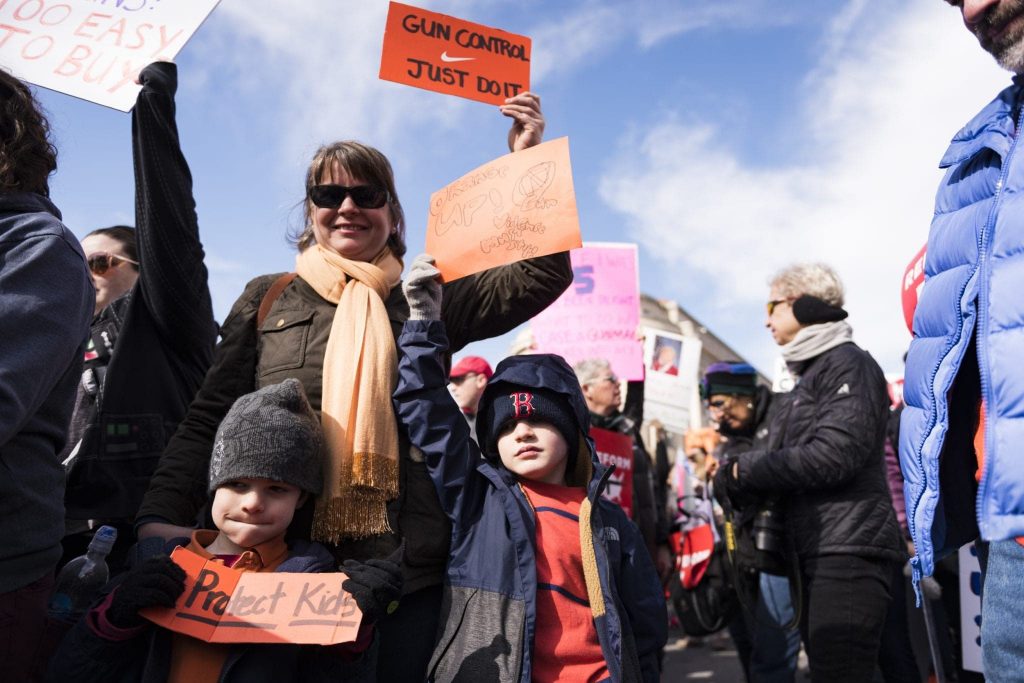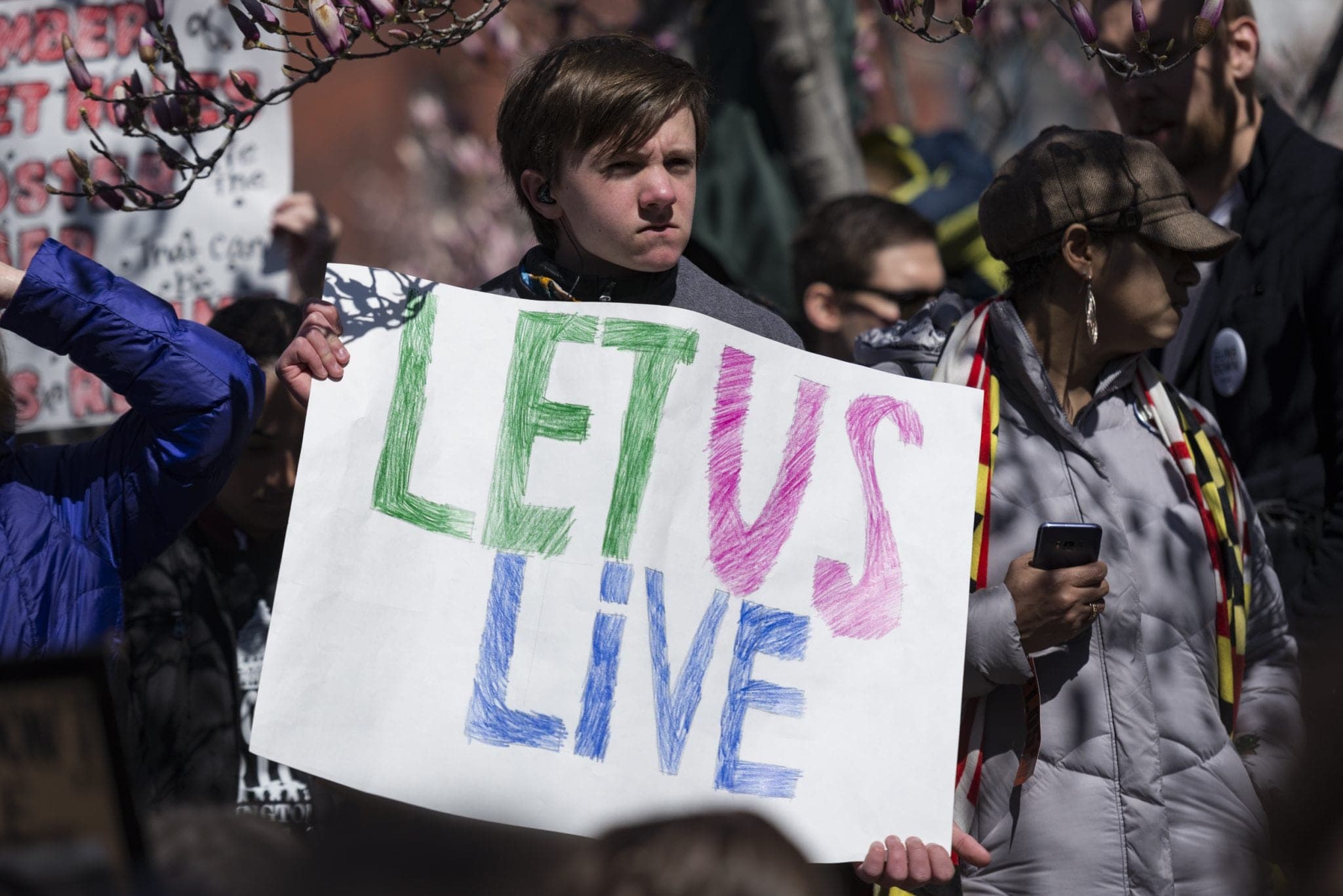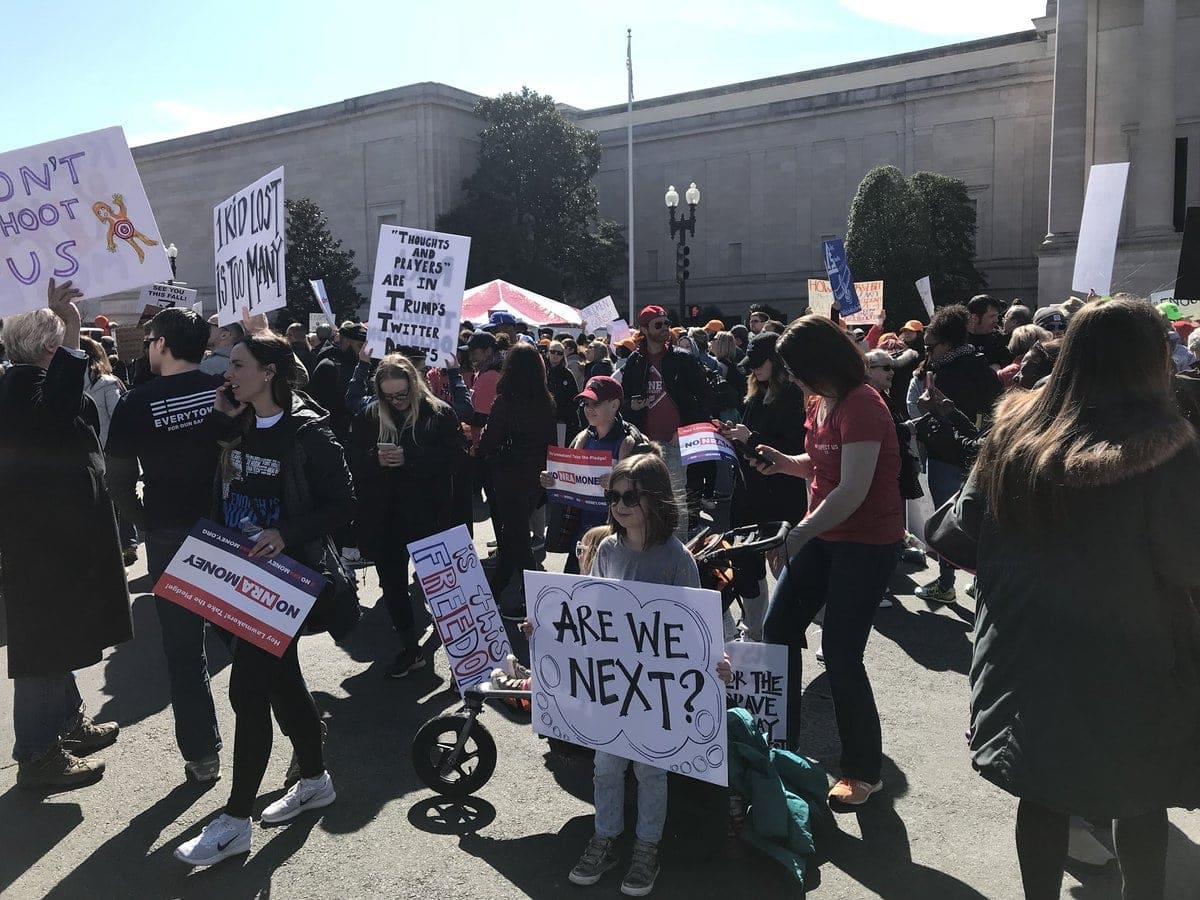A Syracuse family marches for the next generation
A Syracuse family marches for the next generation

A month ago, Katie Sojewicz turned on her television just in time to see a teenaged survivor of mass violence rebuke the National Rifle Association and its chief spokeswoman on a national broadcast. It struck Sojevicz with the force of revelation that children had assumed the leadership of the campaign against gun violence.
In effect, Sarah Chadwick, a student who narrowly survived the February massacre at Marjory Stoneman Douglas High School, persuaded Sojewicz, through her calm and level-headed response, that she and her family just had to join the March for Our Lives in Washington.
“We just made a hotel reservation and said we need to be involved in this,” she said.
Sojewicz and her husband, Joe, traveled from Syracuse to Washington with their three children. She wanted to show her children civic engagement, solidarity for the 17 victims of the Parkland high school shooting and take an active stand for gun control.
Youth initiative defined this march. Adults gazed on with looks of anger. Others teared up as children read the speeches, directed medical personnel to those needing help in the crowd and demanded political action.

Sojewicz’s kids; Joey, 16, Hannah, 13, and Ryan, 10, witnessed it live.
“We’re a pretty politically active family,” Sojewicz said. “So they are along for the ride often whether they want to be or not. We think that’s important.”
She joined Moms Demand Action’s (MDA) local Syracuse group within one day of the attack in Parkland, Florida, just as one of the group’s local leaders, Kevin McClave, joined it immediately after the attack on an elementary school in Sandy Hook, Connecticut.
Sojewicz wanted to go beyond complaining online. McClave said that all that separated his daughter, of the same age as the Sandy Hook victims, from their fate was luck. That wasn’t good enough for him.
Both have used the group to engage with local and state leaders to prevent gun violence. They drew roughly 100 supporters at Nottingham High School in Syracuse on March 1 and most planned to join the Syracuse march on Saturday. Sojewicz, a teacher and Syracuse City School District Board of Education member, was one of at least three MDA Syracuse members who traveled to the capital.
“Other than making some financial contributions and emails, I didn’t really do anything else,” she said of her past efforts. “I have — since November of 2016 — written more emails, called more elected officials than I have in any of my other years.”
Sojewicz said she is hopeful for the future, because the Parkland story has remained in the public consciousness for 38 days without being forgotten. The election of Donald Trump upset her, but she said it ushered in an era of political activism showcased by the teenagers on Saturday.
Speakers at the march invoked Nicholas Dworet, a student killed in Parkland, Florida who would have turned 18 on March 24, as well as dozens of other victims of both highly touted and underreported murders.

Protestors expressed themes of voting, a crusade against the NRA’s influence, the ineffectiveness of “thoughts and prayers” and the power of young people through posters, even as loudspeakers drowned out chants. Some specifically backed universal background checks, an assault weapons ban and limits in magazine capacities.
Sojewicz and her daughter, Hannah, attended the January 2017 Women’s March in Washington. Today, teens not much older than she counted down the days until they could vote.
“It shows that kids can speak up and people can listen and adults don’t always have to do everything for the kids,” Hannah said. “We care what’s happening with our country because it’s going to be ours in the future.”
Hours before the March for Our Lives was supposed to begin, a woman on the Metro’s Blue Line wondered where to gather for the demonstration. Her friend had a plan.
“Follow the kids — that’s how we got here.”





